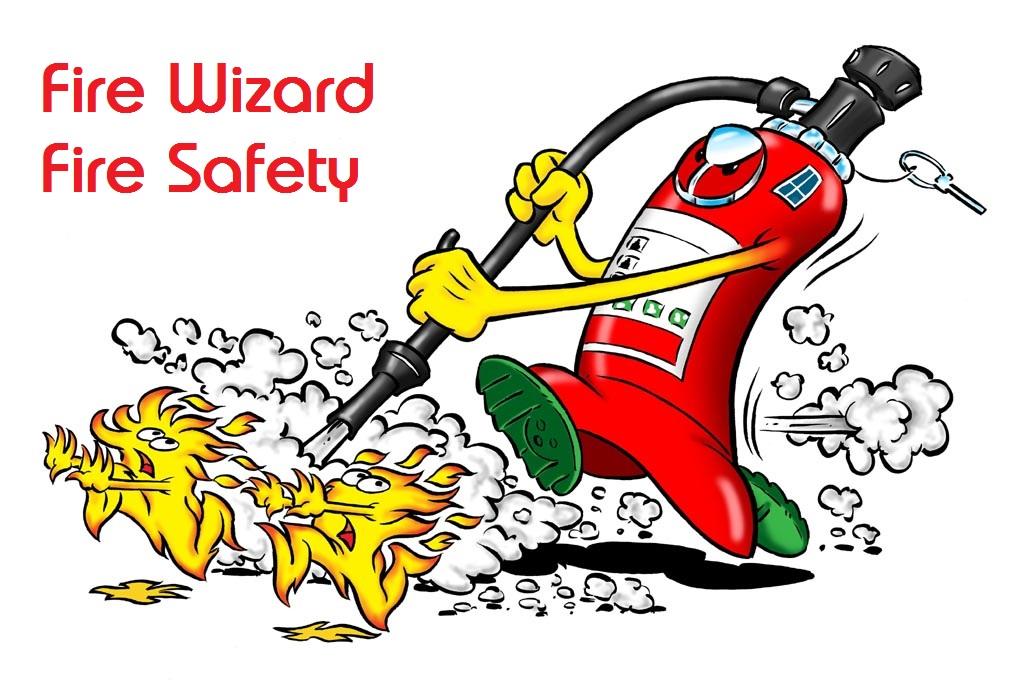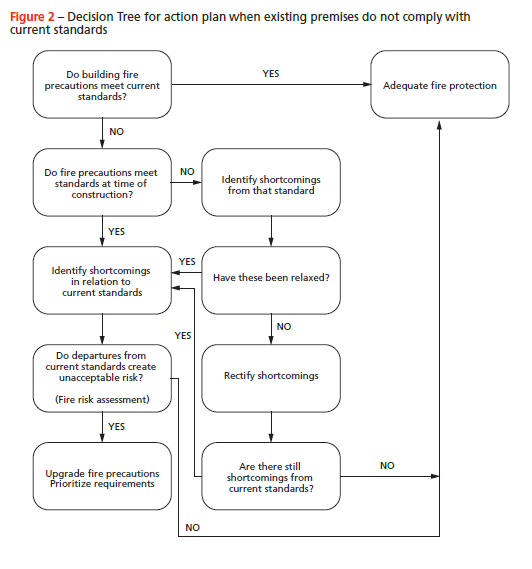-
Posts
2,567 -
Joined
-
Last visited
Everything posted by AnthonyB
-
They can be linked to smoke detectors that do this, yes. It is common practice in sleeping risk premises to shut them all at night however.
-
In theory no, but the closer would need to be linked to automatic fire detection each side of the door in line with the locations stated in BS7273-4
- 68 replies
-
- door closer
- fire door
-
(and 1 more)
Tagged with:
-
It should have a manual valve in all cases and if provided with a fixed suppression system and automatic valve as well that operates if the system is activated. Retrospective provision of automatic release on general alarm isn't required unless insurers or risk assessments indicate. Some buildings will have linked the main gas intake valve to the alarm instead so all gas equipment shuts down not just the kitchens
-
Individual manufacturers often provide guidance, usually the top of the chair frame would be 700 - 800mm from the floor.
-
Without a risk assessment and rationale it's not advisable. That isn't to say it's impossible - several premises are designed for delayed evacuation of certain areas, e.g. larger shopping centres have their security control rooms made of materials with enhanced fire resistance and several similarly enhanced escape routes to allow continued occupation during an alarm so as to monitor and manage any incident and evacuation.
-
Without seeing the premises and finding out a lot more specific information I can't give you specifics, however there are many potential options, too many people fixate on Evacuation Chairs which are not always the most appropriate answer. You would also have to budget for staff training and maintenance, you can't just buy them and stick them on the wall, it's quite a big job to correctly implement the use of mobility aids.
-
No, they are making it up as they go along and I would suggest you put this information to your local Fire & Rescue Service's Protection/Technical Fire Safety department (they all have different names for what used to be the Fire Prevention Department these days!) who would be very interested and no doubt follow this up for you.
-
As a one off they would be right as they use paraffin which has a relatively high flash point and isn't readily ignited as a pool, but if it is a regular thing there will be a potential build up over time of paraffin soaked into the wood, which would increase the overall risk of fire and increase the intensity and rate of spread of fire generally (as oppose to only during the performance). Most correctly insured fire eaters would have as an insurance clause suitable extinguishers, fire blanket and safety assistant (not necessary dedicated but a member of the troupe not performing at the same time as the others and alternating) on hand and risks should be reasonably low. Some means of protecting the wood from spills of paraffin to prevent accumulation may be wise.
-
As long as you aren't going to have over 60 persons you are fine on Travel Distance and number of exits
-
Depends on the door, some fire doors, generally those not protecting escape routes, don't need cold smoke seals.
-

Legal requirement for FRA document in block of 6 flats?
AnthonyB replied to SamF's topic in Fire Risk Assessments
They should have carried out a fire risk assessment, they are responsible for compliance on behalf of the freeholder and should have instructed one. -
Not at all. Only CO2 extinguishers require hydro testing in the UK & EU, all the other types, being lower pressure, are specifically exempted from pressure vessel safety regulations. (A technical exception to this is if they are renovated by being shotblasted and repainted, but this isn't usually done with non CO2 types anymore as new equipment prices make it not cost effective) They do require testing by discharge every 5 years as part of an Extended Service.
-
That's OK - I had to think for a while to work out the best way!
-
"A building of approx xxm height with flats off eight half landings" ?
-
If the door was a compliant fire door in the past then assuming the block meets the other fire safety conditions for flats and based on the size of the premises it would be acceptable now under the current guidance. If it's not compliant it will be her door and if she refuses to change it then they should be reported to the local authority for enforcement under the Housing Act.
-
It's a protected shaft, complies with Building Regulations and other fire safety guidance. It's an urban myth that these need stopping routinely and sadly many building owners have wasted money on doing this either on the advice of those who don't know what they are doing or are fleecing the owner as they also do the works.
-

How often do we need to certify emergency lighting?
AnthonyB replied to a topic in Emergency Lighting
You need to evidence your system of maintenance, a certificate is one way of doing this but not exclusive. -
They need to meet the minimum lighting level for the area - e.g. 1 lux on escape routes, 0.5 lux for open areas, etc.
-
If installed properly and proper pre-made they can comply, something knocked up on site probably won't....the felt barrier isn't allowed to be loose either and should be mechanically fastened. This should help http://www.nhbc.co.uk/Builders/ProductsandServices/TechZone/NHBCStandards/TechnicalGuidanceDocuments/72/filedownload,75082,en.pdf
-
The test switch is a safe way to cause a permanent mains failure to the emergency fittings for both the monthly function test and annual duration test. Many older existing installations don't have them, but newer/new ones should if complying with BS5266
-

Internal Fire Doors, UK 3 Story Flats
AnthonyB replied to 78finn's topic in Fire Doors and Accessories
For decades in the past it was a Building Regulation requirement for certain internal doors in dwellings (especially flats) to be self closing fire doors, but for a long time now that requirement has been removed and they just need to be fire doors. Most of the time the chains were cut or doors propped so it was considered pointless and better to allow free swing and educate to close at night. -
Without seeing I cannot be 100% but you sound like you will have more than enough exits and width for your occupancy and no travel distance issues.
-
Well BS9999 is out of the window as few Heritage buildings will meet all it's requirements, it's usually the English Heritage guidance along with the usual guides
-
Doors to the outside don't need self closers, internal doors often do. Those inside the flats don't anymore, but the front doors into internal common areas do and have done for a very long time - if your conversion is of a former house it may have been done not in compliance with Building Regulations if they have never been fitted. Concealed closers are allowed if to BSEN 1154 & correctly installed - whilst most aren't it is possible to get ones that are.
- 68 replies
-
- door closer
- fire door
-
(and 1 more)
Tagged with:


